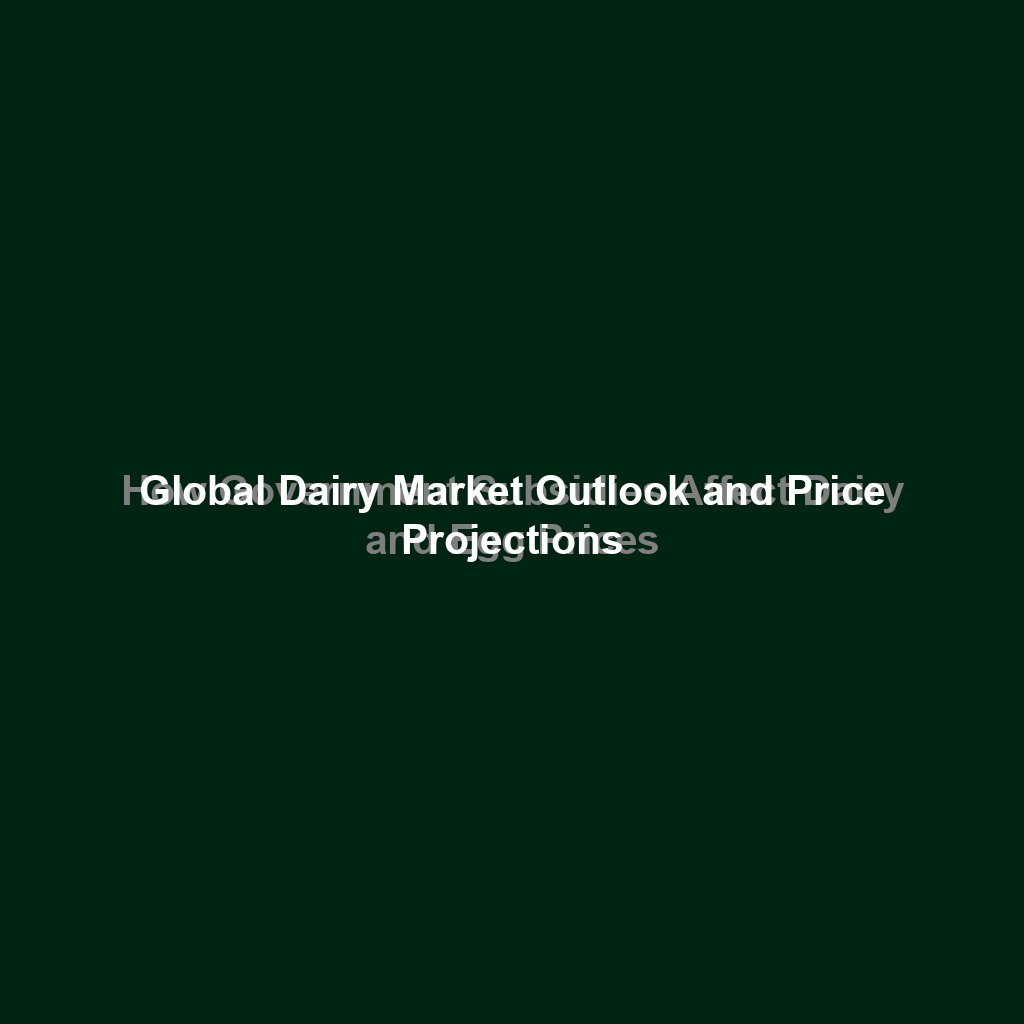
The global dairy market is a dynamic and complex sector that plays a crucial role in the agricultural economy. Understanding the intricacies of this market, including price projections and influencing factors, is essential for stakeholders ranging from farmers to policymakers. This article delves into the global dairy market outlook and provides an in-depth analysis of price projections, exploring the various elements that shape this vital industry.
Chapter 1: Overview of the Global Dairy Market
The global dairy market is a significant component of the agricultural sector, encompassing a wide range of products such as milk, cheese, butter, yogurt, and other dairy derivatives. The market is characterized by its diversity, with different regions specializing in various dairy products based on cultural preferences, climatic conditions, and technological advancements.
1.1 Market Size and Growth
The global dairy market has witnessed substantial growth over the past few decades, driven by increasing population, rising incomes, and changing dietary patterns. According to industry reports, the market is expected to continue its upward trajectory, with emerging economies playing a pivotal role in this expansion. The demand for dairy products is particularly strong in Asia-Pacific, Latin America, and Africa, where urbanization and lifestyle changes are leading to higher consumption rates.
1.2 Key Players and Regions
The dairy market is dominated by a few key players, including multinational corporations and cooperatives. Companies such as Nestlé, Danone, and Lactalis have a significant presence in the global market, leveraging their extensive distribution networks and brand recognition. Additionally, countries like the United States, New Zealand, and the European Union are major producers and exporters of dairy products, contributing to the global supply chain.
1.3 Challenges and Opportunities
While the global dairy market presents numerous opportunities, it also faces several challenges. Climate change, fluctuating feed costs, and trade barriers are some of the issues that can impact production and pricing. However, advancements in technology, such as precision farming and genetic improvements, offer potential solutions to enhance productivity and sustainability in the dairy sector.
Chapter 2: Agricultural Price Analysis and Projections
Price analysis is a critical aspect of understanding the global dairy market, as it influences decision-making for producers, consumers, and policymakers. This chapter explores the factors affecting dairy prices and provides projections for future trends.
2.1 Factors Influencing Dairy Prices
Several factors contribute to the volatility of dairy prices, including supply and demand dynamics, input costs, and geopolitical events. Weather conditions, such as droughts or floods, can significantly impact milk production, leading to price fluctuations. Additionally, changes in consumer preferences, such as the growing demand for plant-based alternatives, can affect the market balance.
2.2 Price Projections and Trends
Price projections for the global dairy market are influenced by both short-term and long-term factors. In the short term, seasonal variations and immediate supply chain disruptions can cause price spikes or drops. In the long term, structural changes in the industry, such as technological advancements and policy shifts, play a more significant role in shaping price trends.
According to recent forecasts, the global dairy market is expected to experience moderate price increases over the next few years. This projection is based on anticipated growth in demand from emerging markets, coupled with potential constraints on supply due to environmental and regulatory challenges.
2.3 Impact of Trade Policies and Agreements
Trade policies and international agreements have a profound impact on the global dairy market. Tariffs, quotas, and trade disputes can alter the competitive landscape, affecting both prices and market access. For instance, the renegotiation of trade agreements such as the North American Free Trade Agreement (NAFTA) and the Trans-Pacific Partnership (TPP) has implications for dairy exports and imports.
Moreover, the European Union’s Common Agricultural Policy (CAP) and the United States’ Farm Bill are examples of domestic policies that influence global dairy prices by affecting production levels and export capabilities.
Conclusion
The global dairy market is a complex and evolving sector that requires careful analysis and strategic planning. Understanding the factors that influence dairy prices and projecting future trends are essential for stakeholders to navigate the challenges and opportunities in this industry. As the market continues to grow and adapt to changing consumer preferences and environmental conditions, stakeholders must remain vigilant and responsive to ensure the sustainability and profitability of the dairy sector.
In summary, the global dairy market outlook and price projections highlight the importance of a comprehensive approach to agricultural price analysis. By considering the myriad of factors that impact the market, stakeholders can make informed decisions that contribute to the resilience and success of the dairy industry.



